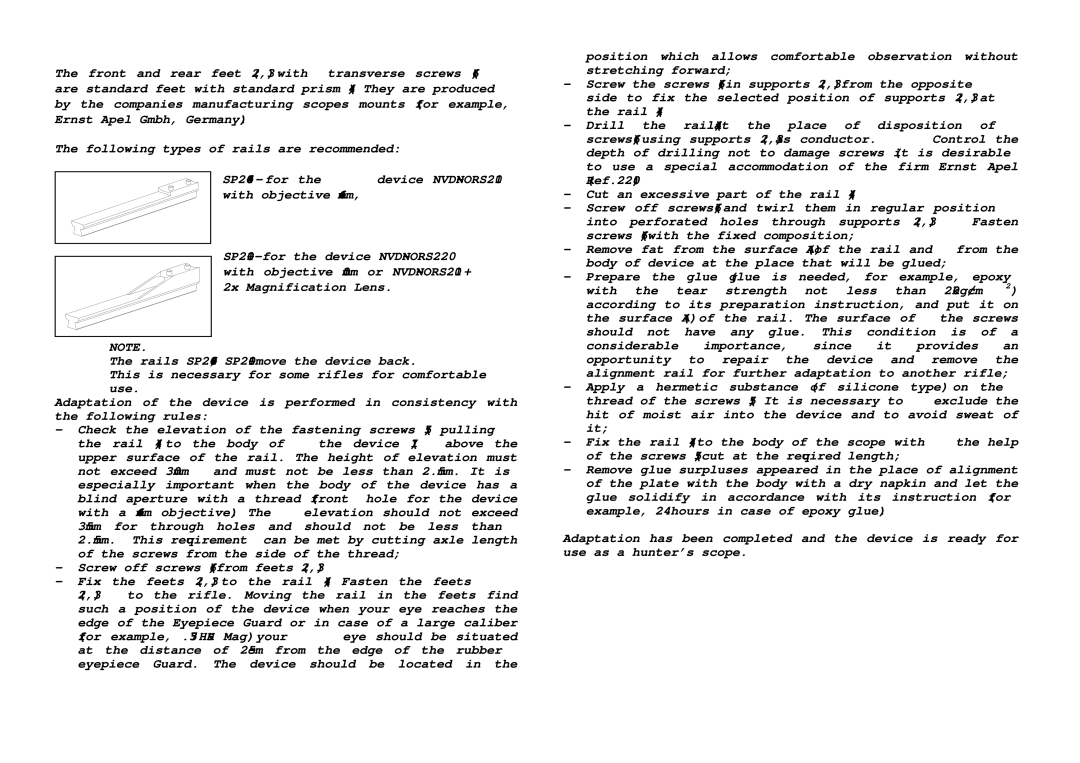NVD-NORS220, NVD-NORS210 specifications
The Canon NVD-NORS210 and NVD-NORS220 are innovative night vision devices designed to enhance visibility in low-light conditions, making them ideal for a variety of applications, including wildlife observation, security, and outdoor adventures. These models reflect Canon's commitment to quality and performance in night vision technology.Both devices utilize advanced infrared technology, allowing users to see in complete darkness. The NVD-NORS210 features a 1x magnification level, while its counterpart, the NVD-NORS220, offers a 3x magnification option. This distinction enables users to choose a model that best suits their viewing needs – whether close-up details or more distant observation.
One significant characteristic of these night vision devices is their image resolution. Both models deliver exceptional clarity and sharpness, ensuring a clear view of the surroundings even in low-light situations. The user-friendly interface allows for easy operation, making it accessible for both novice and experienced users. The intuitive control layout helps in adjusting settings without distracting from the primary task.
In addition to their optical performance, the NVD-NORS210 and NVD-NORS220 are equipped with impressive digital enhancements. These devices include features such as built-in digital zoom and adjustable brightness levels, allowing for versatility in various lighting conditions. The inclusion of video output capability also enables users to connect the devices to recording equipment for documentation or broadcasting purposes.
Robust construction is a defining feature of the NVD-NORS series. Both models are designed to be weather-resistant, providing assurance against rain or dust exposure, a critical factor for outdoor use. Their ergonomic design ensures comfort during prolonged viewing sessions, and the lightweight build enhances portability without compromising durability.
Lastly, both the NVD-NORS210 and NVD-NORS220 come equipped with enhanced battery life, allowing for extended use during outdoor excursions. This efficiency is vital for users who rely on these devices during long nights of observation or surveillance.
In conclusion, the Canon NVD-NORS210 and NVD-NORS220 stand out for their advanced night vision capabilities, robust features, and user-friendly design. With these devices, users can enjoy clear visibility even in the darkest conditions, making them an excellent choice for anyone looking to explore or ensure safety in low-light environments.

